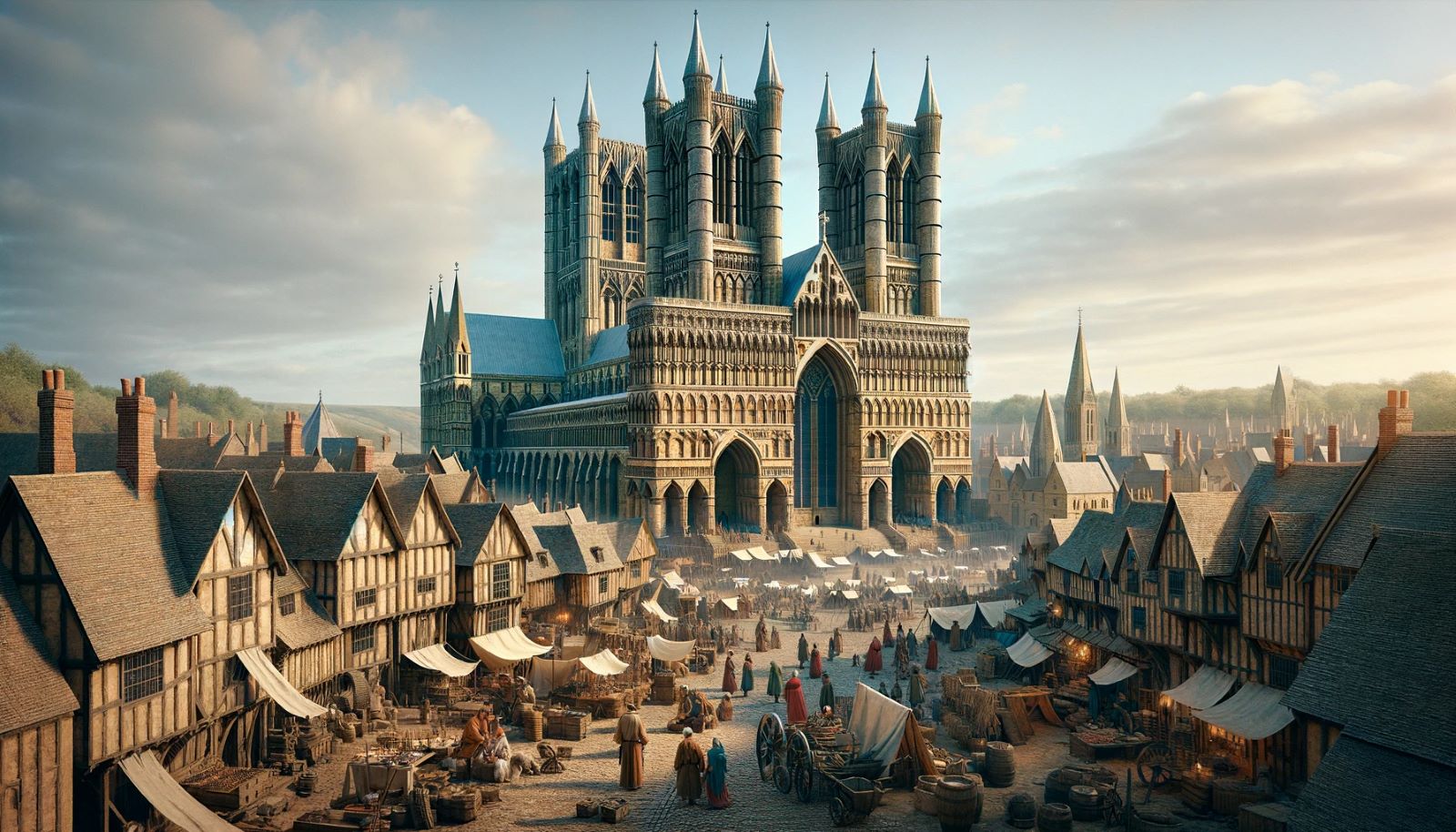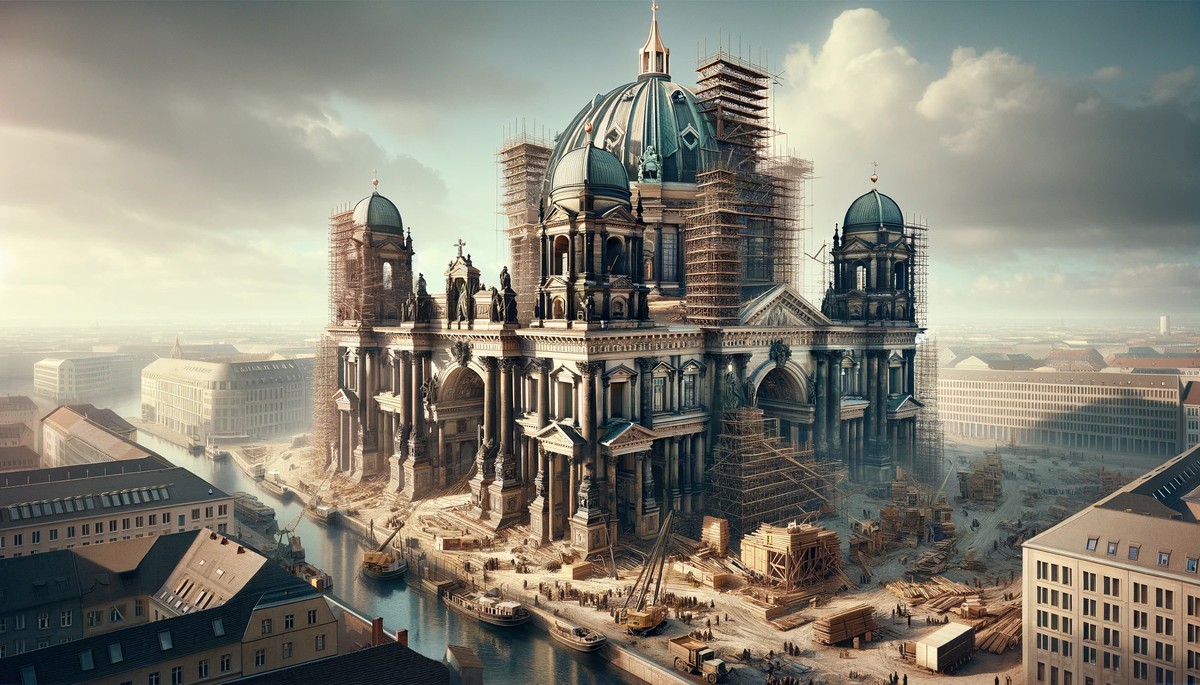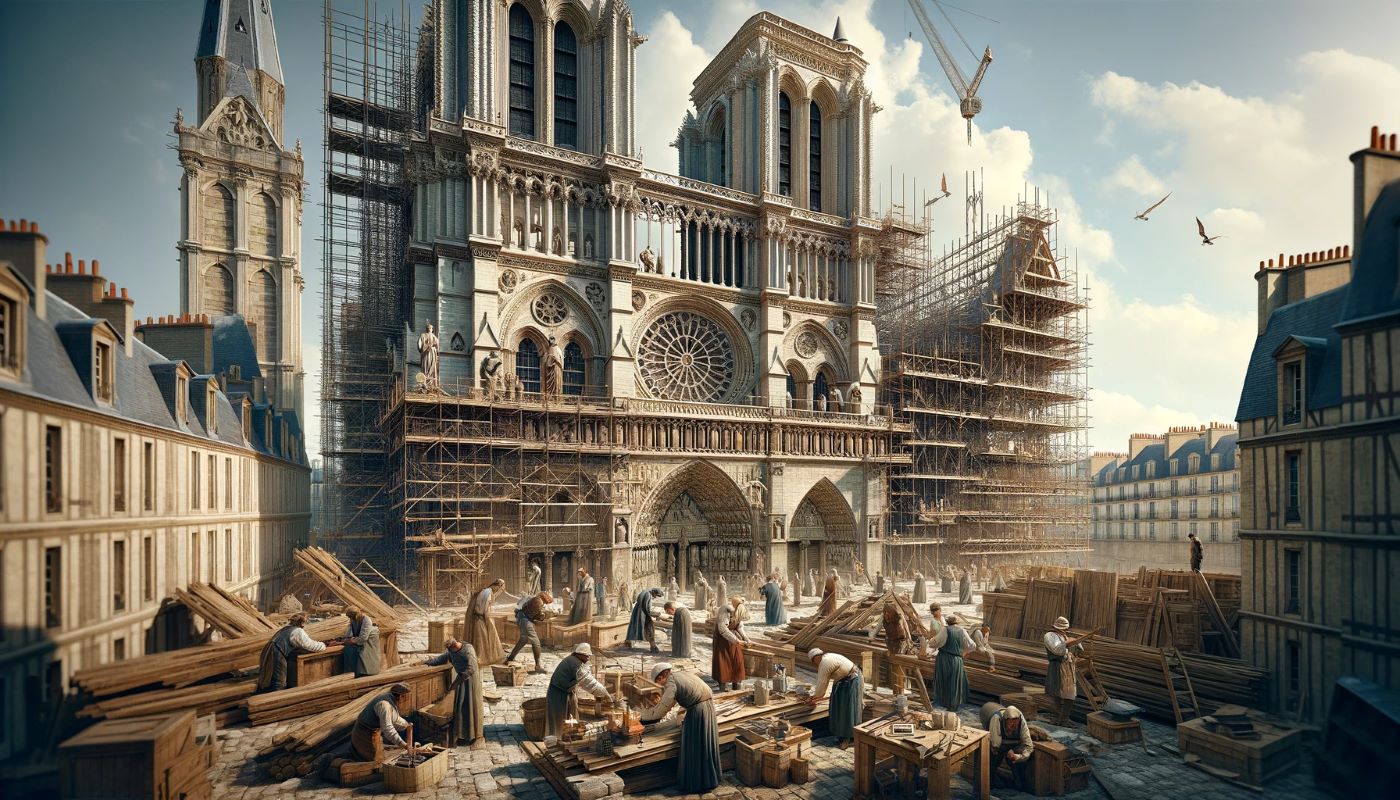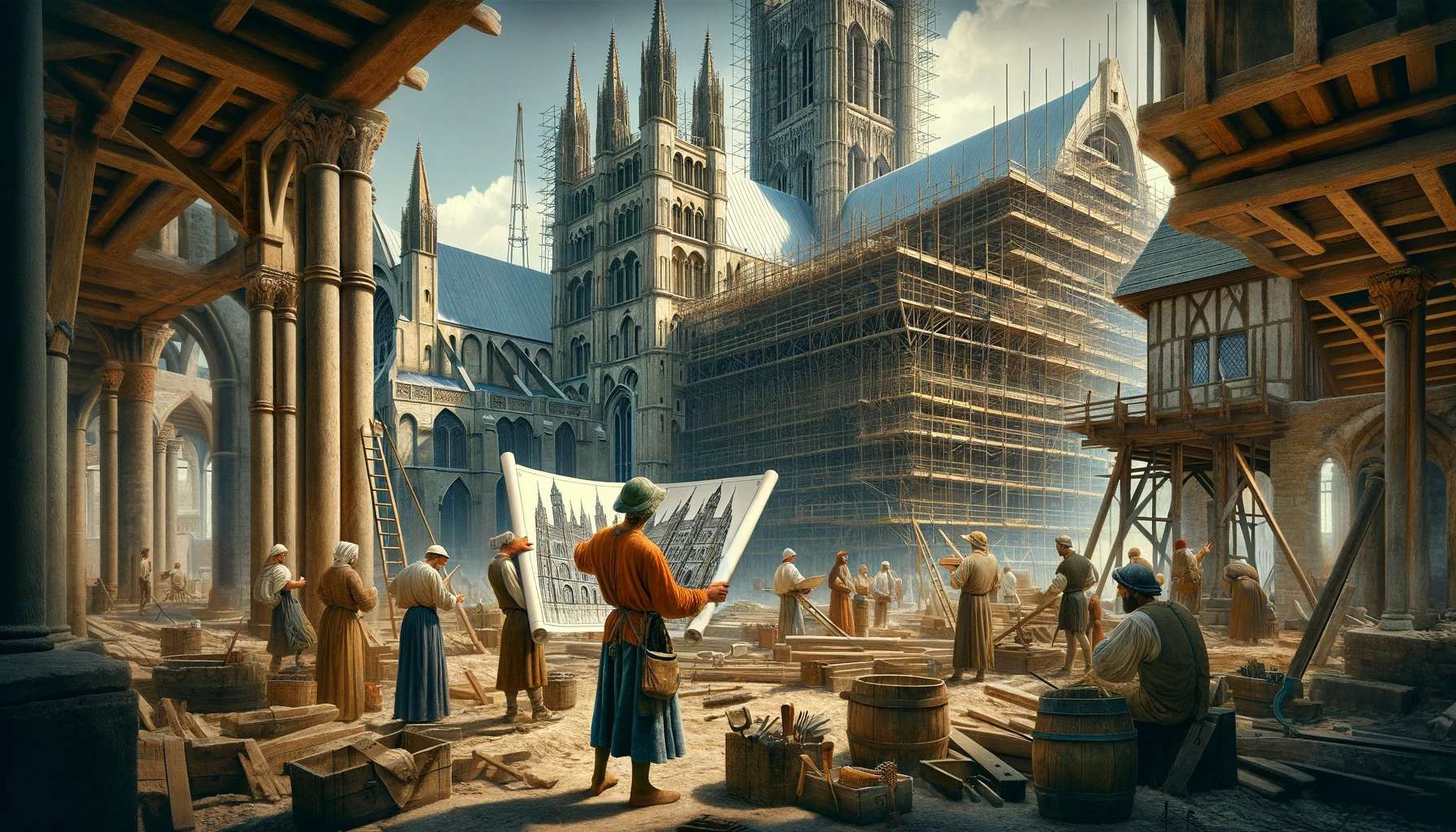Home>Arts and Culture>When Was Exeter Cathedral Built
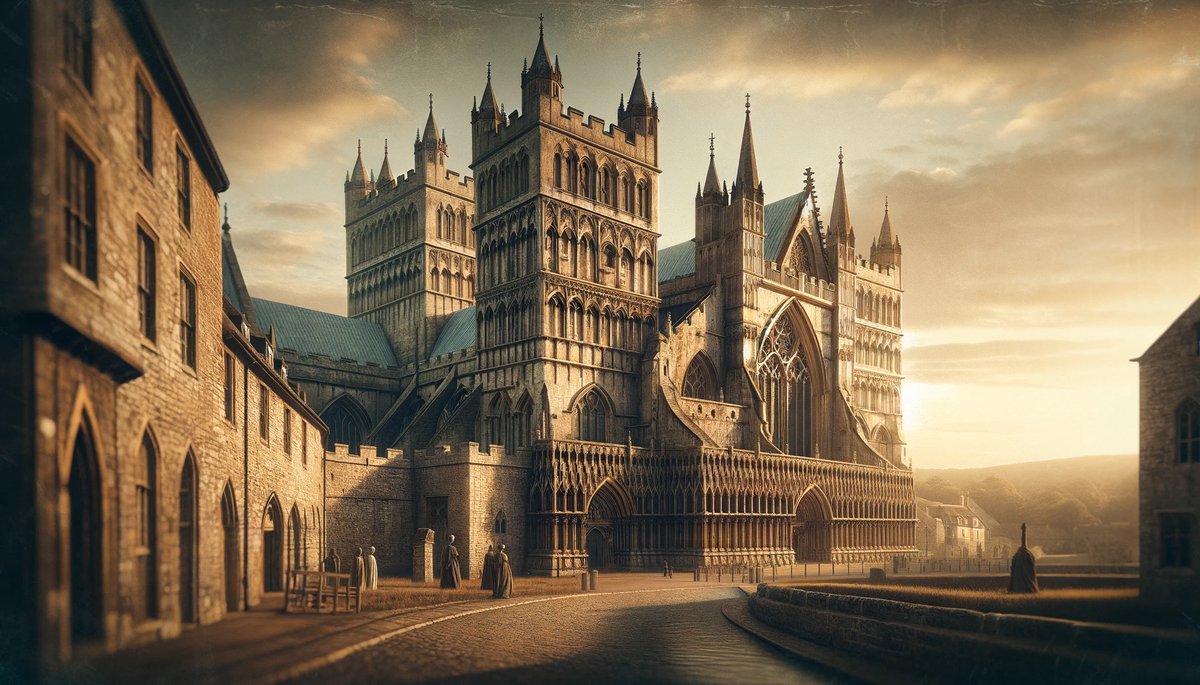

Arts and Culture
When Was Exeter Cathedral Built
Published: February 16, 2024
Peter Smith, Editorial Director at Christian.net, combines deep insights into faith, politics, and culture to lead content creation that resonates widely. Awarded for his contributions to religious discourse, he previously headed a major organization for religious communicators, enhancing dialogue on faith's societal impacts.
Discover the rich history of Exeter Cathedral, a masterpiece of arts and culture, and learn about its construction and significance. Explore the architectural marvel that has stood the test of time.
(Many of the links in this article redirect to a specific reviewed product. Your purchase of these products through affiliate links helps to generate commission for Christian.net, at no extra cost. Learn more)
Table of Contents
Introduction
Exeter Cathedral, also known as the Cathedral Church of Saint Peter at Exeter, stands as a magnificent testament to the enduring legacy of medieval architecture and religious devotion. Nestled in the heart of the historic city of Exeter in Devon, England, this awe-inspiring structure has captivated visitors for centuries with its grandeur and spiritual significance.
From its soaring spires to its intricately carved stone façade, Exeter Cathedral is a living embodiment of the rich cultural heritage and artistic prowess of the medieval era. As one gazes upon its imposing silhouette against the Devonshire skyline, it becomes evident that this sacred edifice holds within its walls a wealth of history, artistry, and spiritual resonance.
The cathedral's enduring presence serves as a poignant reminder of the profound impact of faith and craftsmanship on the landscape of human civilization. Its hallowed halls have borne witness to centuries of triumphs, tribulations, and the unwavering spirit of the community it serves.
As we embark on a journey to unravel the mysteries and marvels of Exeter Cathedral, we will delve into its storied past, explore the architectural marvels that define its structure, and uncover the enduring significance it holds in the hearts of locals and visitors alike. Join us as we embark on a captivating exploration of this venerable monument to human ingenuity and spiritual devotion.
Read more: When Was Hereford Cathedral Built
History of Exeter Cathedral
The history of Exeter Cathedral is a tapestry woven with threads of triumph, tragedy, and unwavering resilience. Its origins can be traced back to the early 12th century when construction commenced under the auspices of Bishop William Warelwast. The cathedral's foundation stone was laid in 1133, marking the inception of a monumental undertaking that would span centuries.
The initial phase of construction saw the erection of the Norman cathedral, characterized by its robust pillars and rounded arches, emblematic of the Romanesque architectural style prevalent during that era. However, the ravages of time and tumultuous historical events necessitated the cathedral's reconstruction in the Gothic style, a transformation that would imbue the structure with a newfound sense of grandeur and elegance.
Throughout the centuries, Exeter Cathedral bore witness to a myriad of historical upheavals, including the ravages of war, political intrigue, and the sweeping tides of societal change. Despite enduring the ravages of fire, siege, and religious upheaval, the cathedral emerged as a symbol of resilience and spiritual fortitude, standing as a testament to the unwavering faith of the community it served.
The cathedral's hallowed halls have echoed with the footsteps of countless pilgrims, monarchs, and ordinary citizens seeking solace and inspiration within its sacred confines. Its significance transcends the boundaries of time, serving as a living chronicle of the trials and triumphs that have shaped the course of English history.
Today, Exeter Cathedral stands as a living monument to the enduring legacy of medieval craftsmanship and spiritual devotion. Its rich tapestry of history continues to unfold, inviting visitors to immerse themselves in the timeless allure of its storied past and the indelible mark it has left on the cultural landscape of Devon and beyond.
Construction of Exeter Cathedral
The construction of Exeter Cathedral stands as a testament to the unwavering dedication and ingenuity of medieval craftsmen who toiled tirelessly to bring this architectural marvel to life. The ambitious endeavor to erect this sacred edifice commenced in 1133 under the patronage of Bishop William Warelwast, marking the dawn of a monumental chapter in the annals of English ecclesiastical history.
The cathedral's initial incarnation, built in the Norman architectural style, bore the hallmarks of robust pillars, rounded arches, and a sense of imposing solidity characteristic of the Romanesque tradition. However, as the centuries unfolded, the cathedral underwent a remarkable transformation, evolving from its Norman roots to embrace the soaring splendor of the Gothic architectural style.
The transition to Gothic architecture heralded a new era of innovation and artistic expression, as evidenced by the infusion of pointed arches, ribbed vaults, and soaring spires that imbued the cathedral with an ethereal sense of verticality and grace. The meticulous craftsmanship and visionary design principles employed in the cathedral's construction reflected the profound spiritual aspirations of the medieval era, seeking to elevate the human spirit through awe-inspiring architectural grandeur.
The construction of Exeter Cathedral unfolded over the course of several centuries, bearing witness to the evolving trends and techniques in medieval architecture. The cathedral's facade, adorned with intricately carved stone reliefs and ornate tracery, stands as a testament to the consummate skill of the craftsmen who labored to bring forth this masterpiece of stone and mortar.
The cathedral's construction was not without its challenges, as the tumultuous currents of history, including fires, wars, and societal upheavals, tested the resilience of the structure and its custodians. Yet, through unwavering determination and a steadfast commitment to the vision of creating a sacred haven of transcendent beauty, the cathedral gradually took shape, embodying the aspirations and collective spirit of the community it served.
Today, the construction of Exeter Cathedral stands as a living testament to the enduring legacy of medieval craftsmanship and the indomitable human spirit. Its soaring spires and intricately carved details continue to inspire awe and reverence, inviting visitors to embark on a journey through time and behold the timeless majesty of this architectural masterpiece.
Architectural Features
The architectural features of Exeter Cathedral stand as a testament to the ingenuity and artistry of medieval craftsmen, whose visionary designs have endowed this sacred edifice with an enduring sense of grandeur and spiritual resonance. As one beholds the cathedral's imposing silhouette against the Devonshire skyline, a symphony of architectural marvels unfolds, captivating the senses and stirring the soul.
Gothic Splendor
The transition to Gothic architecture heralded a new era of innovation and artistic expression, as evidenced by the infusion of pointed arches, ribbed vaults, and soaring spires that imbued the cathedral with an ethereal sense of verticality and grace. The cathedral's interior exudes an aura of celestial splendor, with its lofty nave, slender columns, and luminous stained glass windows that suffuse the sacred space with a kaleidoscope of ethereal hues.
Read more: When Was Cologne Cathedral Built
Magnificent Vaulting
The cathedral's vaulted ceilings, adorned with delicate tracery and intricate carvings, evoke a sense of celestial transcendence, inviting visitors to gaze heavenward and contemplate the divine mysteries. The ribbed vaults, a hallmark of Gothic architecture, not only serve as a structural marvel but also symbolize the aspiration to reach towards the heavens, echoing the spiritual yearnings of the medieval faithful.
Ornate Stonework
The facade of Exeter Cathedral is adorned with a profusion of intricately carved stone reliefs, depicting scenes from biblical narratives, celestial beings, and earthly motifs. The meticulous craftsmanship and attention to detail evident in the cathedral's stonework bear witness to the consummate skill of the artisans who labored to bring forth this masterpiece of stone and mortar. Each sculpted figure and ornate motif serves as a testament to the profound devotion and artistic prowess of the medieval craftsmen.
Towering Spires
The cathedral's soaring spires, reaching towards the heavens with ethereal grace, stand as a testament to the lofty aspirations and spiritual yearnings of the medieval faithful. The spires, adorned with delicate tracery and crowned with intricate pinnacles, evoke a sense of celestial majesty, inviting visitors to contemplate the ineffable mysteries of the divine.
Timeless Legacy
The architectural features of Exeter Cathedral continue to inspire awe and reverence, inviting visitors to embark on a journey through time and behold the timeless majesty of this architectural masterpiece. As the sunlight filters through the stained glass windows, casting a kaleidoscope of colors upon the hallowed space, one cannot help but marvel at the enduring legacy of medieval craftsmanship and the indomitable human spirit that is enshrined within the sacred precincts of this venerable edifice.
Read more: When Was The Liverpool Cathedral Built
Renovations and Additions
The storied history of Exeter Cathedral is punctuated by a series of renovations and additions that have enriched its architectural splendor and preserved its timeless legacy for future generations. Over the centuries, the cathedral has undergone meticulous restoration efforts and strategic enhancements, ensuring that its hallowed halls continue to resonate with the echoes of history and the enduring spirit of faith.
One of the most notable periods of renovation occurred during the Victorian era, a time marked by a fervent revival of interest in medieval architecture and a renewed appreciation for the cultural heritage embodied by structures such as Exeter Cathedral. The meticulous restoration efforts undertaken during this period sought to revive the cathedral's original grandeur, repairing weathered stonework, rejuvenating delicate tracery, and preserving the luminous beauty of its stained glass windows.
In addition to restoration endeavors, the cathedral has also witnessed strategic additions that have expanded its architectural footprint and enriched its aesthetic allure. Notable among these is the exquisite Bishop's Throne, a magnificent testament to the artistry of the Victorian era, which was installed in the choir to enhance the cathedral's ceremonial grandeur.
Furthermore, the meticulous preservation of the cathedral's medieval fabric has been a cornerstone of the custodial efforts undertaken to safeguard its architectural integrity. From the careful conservation of its ancient stone carvings to the preservation of its soaring spires, every aspect of the cathedral's structure has been lovingly tended to, ensuring that its timeless beauty continues to inspire awe and reverence.
The 20th and 21st centuries have seen a continued commitment to the preservation and enhancement of Exeter Cathedral, with comprehensive conservation projects and innovative initiatives aimed at safeguarding its architectural splendor for future generations. The implementation of cutting-edge conservation techniques and the integration of sustainable practices have further fortified the cathedral's resilience, ensuring that it remains a beacon of cultural heritage and spiritual significance in the modern era.
As the cathedral continues to evolve and adapt to the changing tides of time, each renovation and addition stands as a testament to the enduring legacy of Exeter Cathedral and the unwavering commitment to preserving its architectural grandeur. Through these endeavors, the cathedral's timeless allure is perpetuated, inviting visitors to immerse themselves in the living tapestry of history and artistry that defines this venerable monument to human ingenuity and spiritual devotion.
Significance of Exeter Cathedral
Exeter Cathedral stands as a timeless testament to the enduring significance of religious devotion, architectural prowess, and cultural heritage. Its towering spires and resplendent façade are not merely symbols of medieval craftsmanship, but profound expressions of the human spirit's quest for transcendence and spiritual fulfillment.
The cathedral holds profound significance as a sacred sanctuary that has provided solace, inspiration, and a sense of communal belonging to countless generations. Its hallowed halls have echoed with the whispers of prayers, the harmonies of sacred music, and the collective aspirations of the faithful, serving as a spiritual anchor for the community it serves.
Beyond its role as a place of worship, Exeter Cathedral stands as a living chronicle of English history, bearing witness to the triumphs and tribulations that have shaped the cultural landscape of Devon and beyond. Its ancient stones resonate with the echoes of centuries past, inviting visitors to embark on a poignant journey through time and immerse themselves in the living tapestry of human experience.
The cathedral's architectural splendor and historical resonance have also positioned it as a beacon of cultural heritage, drawing scholars, artists, and enthusiasts from around the world to marvel at its timeless grandeur. Its intricate carvings, celestial vaults, and luminous stained glass windows stand as testaments to the ingenuity and artistry of the medieval era, inspiring awe and reverence in all who behold them.
Moreover, Exeter Cathedral serves as a focal point for community cohesion and cultural enrichment, hosting a myriad of events, concerts, and educational initiatives that celebrate the intersection of art, history, and spirituality. Its role as a vibrant cultural hub ensures that its significance transcends the boundaries of religious affiliation, welcoming individuals from all walks of life to partake in the beauty and wisdom it embodies.
As the sun sets upon the venerable spires of Exeter Cathedral, casting a golden glow upon its time-worn stones, one cannot help but be moved by the enduring significance it holds in the hearts of all who have been touched by its majesty. It stands as a testament to the resilience of the human spirit, the enduring power of faith, and the timeless allure of artistic expression, inviting all who cross its threshold to partake in a profound journey of discovery and contemplation.
